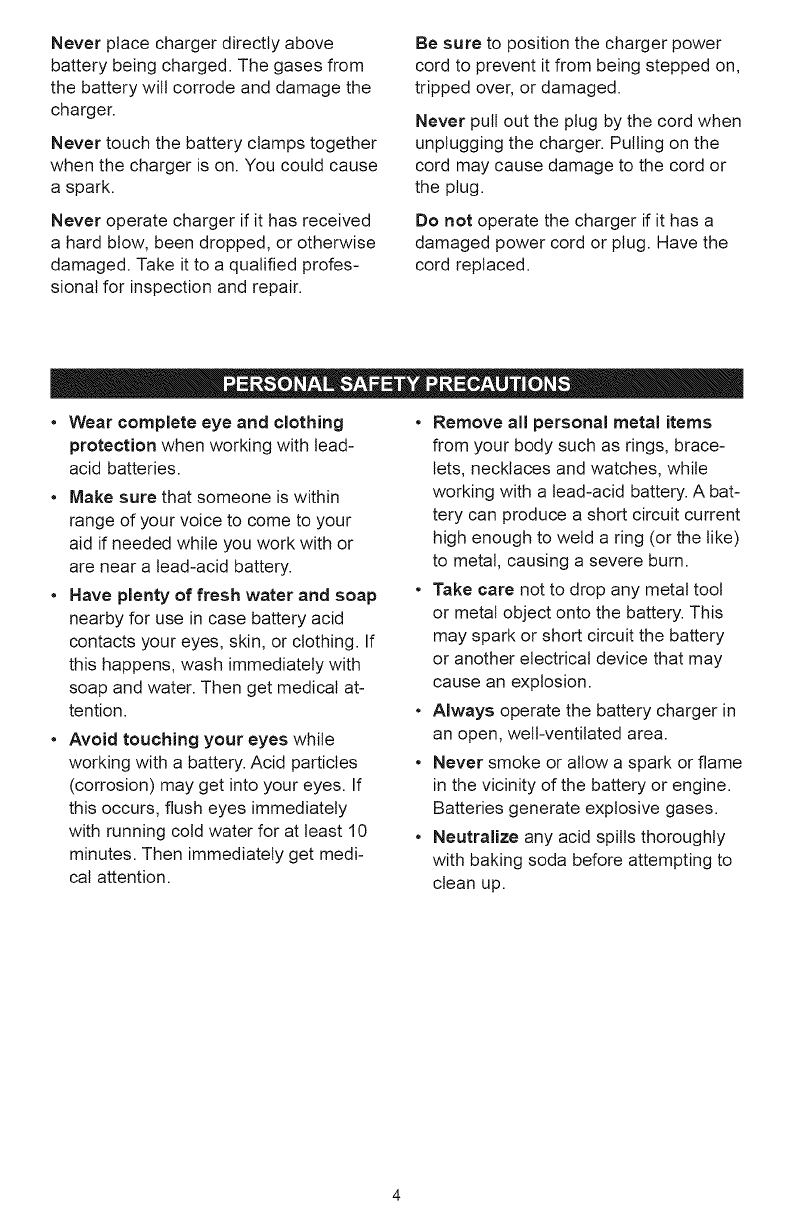
Neverplacechargerdirectlyabove
batterybeingcharged.Thegasesfrom
thebatterywiltcorrodeanddamagethe
charger.
Nevertouchthebatteryclampstogether
whenthechargerison.Youcouldcause
aspark.
Neveroperatechargerifit hasreceived
ahardblow,beendropped,orotherwise
damaged.Takeittoaqualifiedprofes-
sionalforinspectionandrepair.
Be sure to position the charger power
cord to prevent it from being stepped on,
tripped over, or damaged.
Never pull out the plug by the cord when
unplugging the charger. Pulling on the
cord may cause damage to the cord or
the plug.
Do not operate the charger if it has a
damaged power cord or plug. Have the
cord replaced.
• Wear complete eye and clothing
protection when working with lead-
acid batteries.
Make sure that someone is within
range of your voice to come to your
aid if needed while you work with or
are near a lead-acid battery.
Have plenty of fresh water and soap
nearby for use in case battery acid
contacts your eyes, skin, or clothing. If
this happens, wash immediately with
soap and water. Then get medical at-
tention.
Avoid touching your eyes while
working with a battery. Acid particles
(corrosion) may get into your eyes. If
this occurs, flush eyes immediately
with running cold water for at least 10
minutes. Then immediately get medi-
cal attention.
• Remove all personal metal items
from your body such as rings, brace-
lets, necklaces and watches, while
working with a lead-acid battery. A bat-
tery can produce a short circuit current
high enough to weld a ring (or the like)
to metal, causing a severe burn.
• Take care not to drop any metal tool
or metal object onto the battery. This
may spark or short circuit the battery
or another electrical device that may
cause an explosion.
• Always operate the battery charger in
an open, well-ventilated area.
• Never smoke or allow a spark or flame
in the vicinity of the battery or engine.
Batteries generate explosive gases.
• Neutralize any acid spills thoroughly
with baking soda before attempting to
clean up.


















